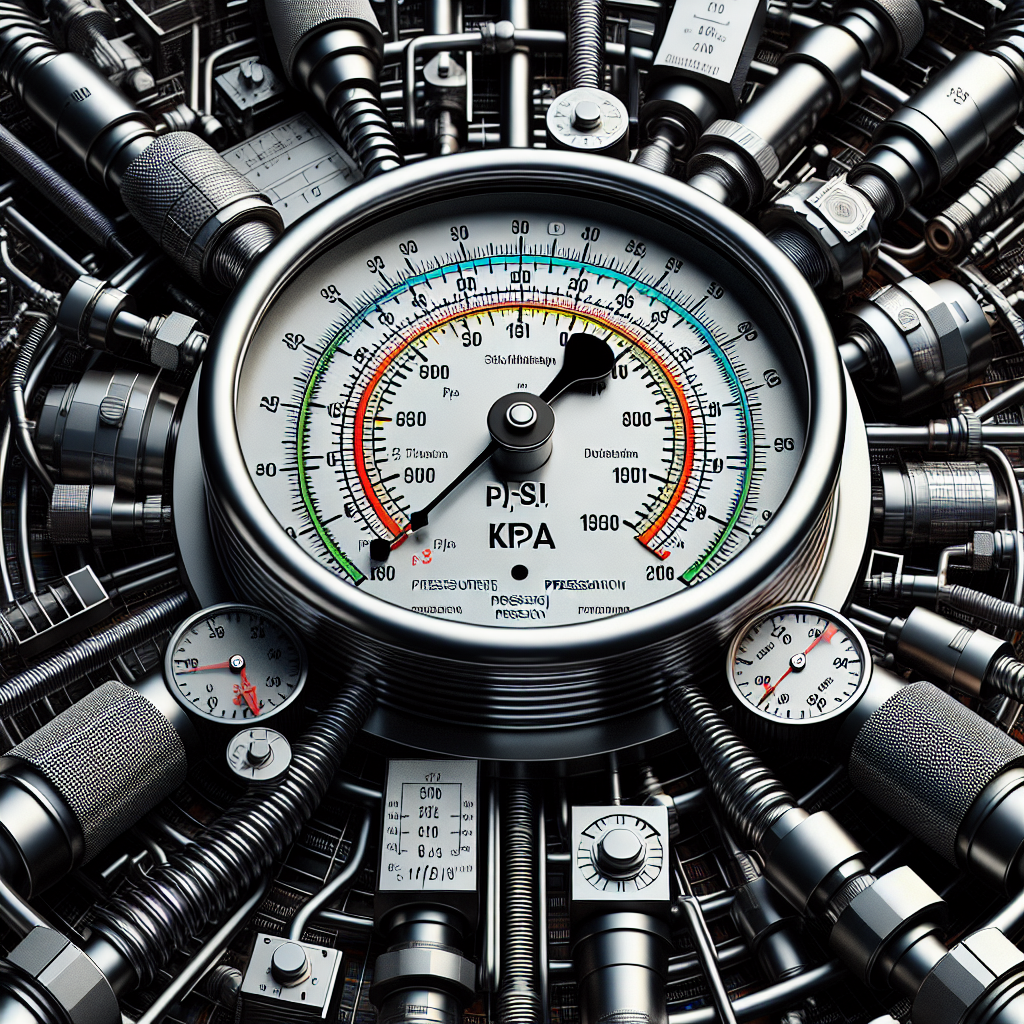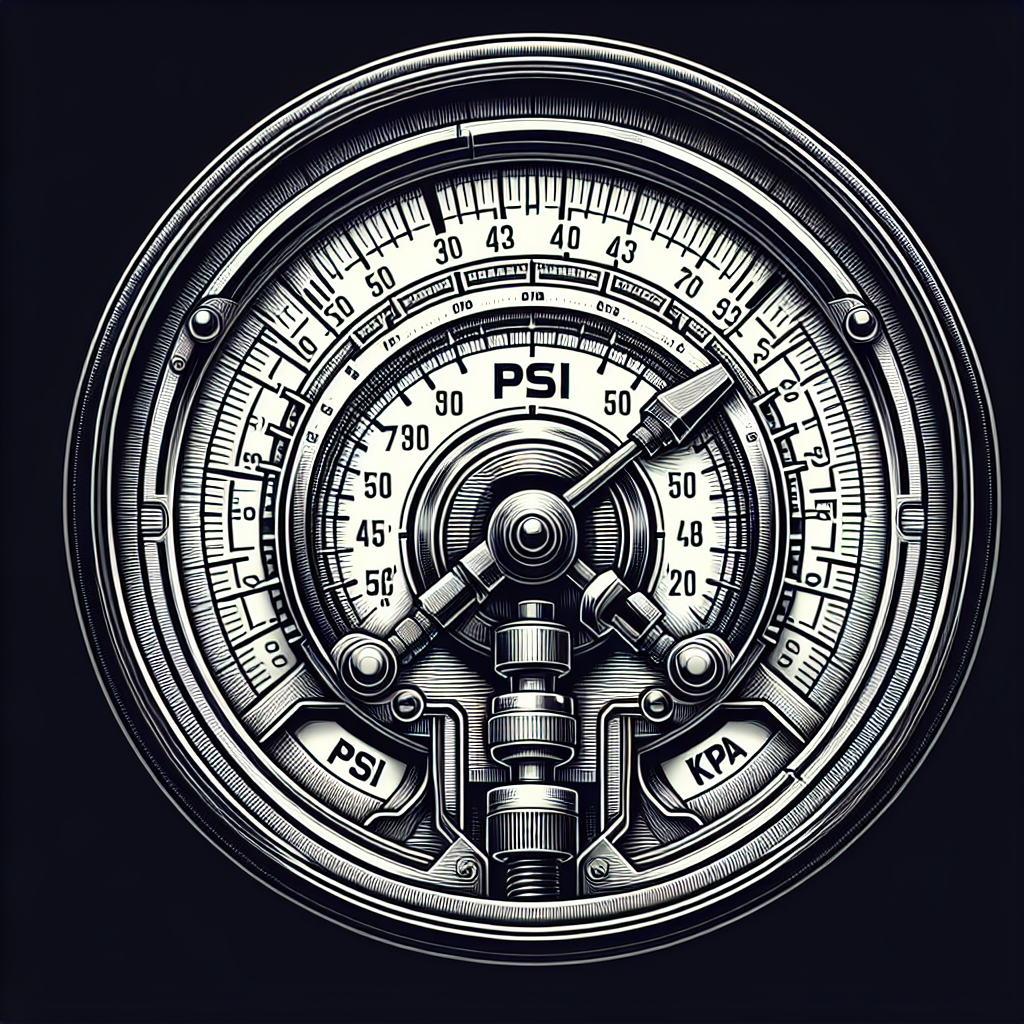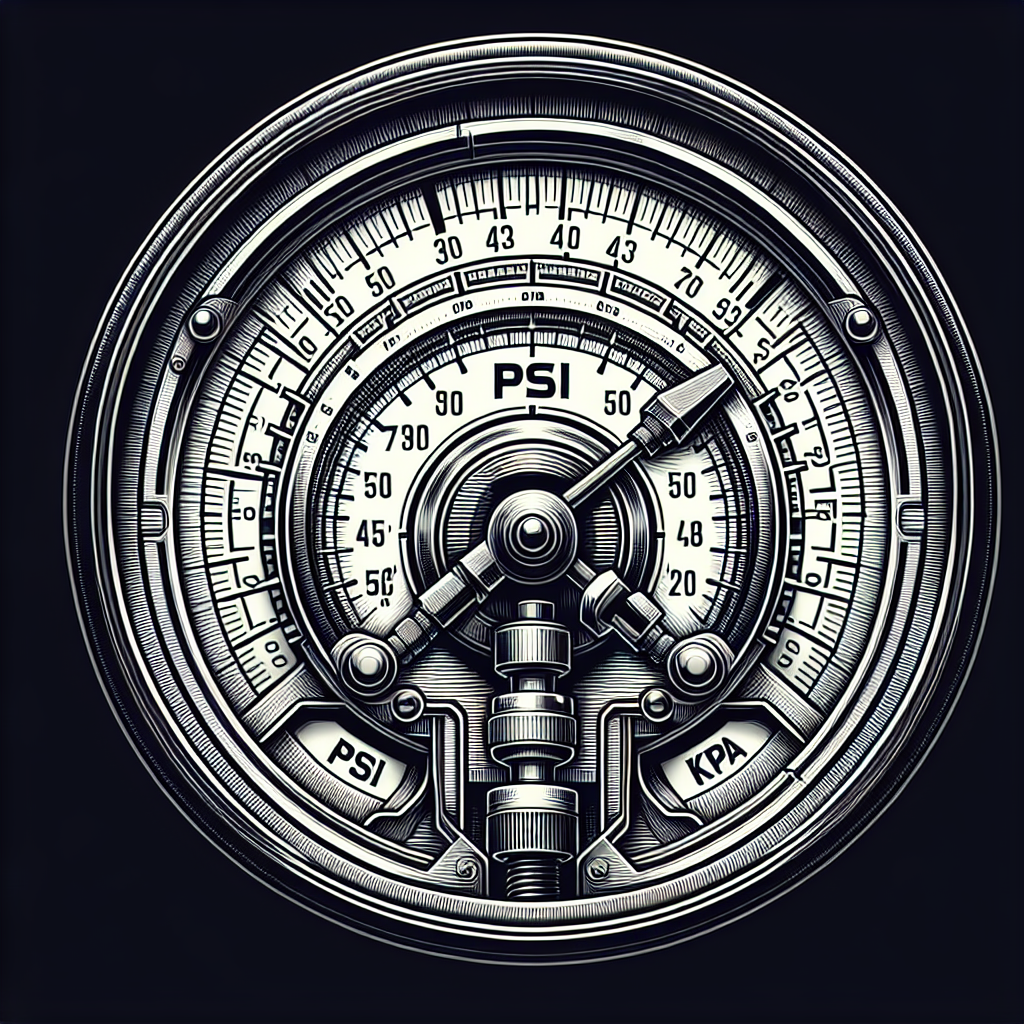Are you constantly puzzled by the difference between PSI and kPa measurements? If so, fret no more, because this article is about to clear up the confusion for you. Whether you’re a car enthusiast, a DIY aficionado, or simply curious about pressure readings, understanding the distinction between PSI and kPa is vital. By the end of this article, you’ll no longer second-guess which unit to use when discussing pressure measurements. So, let’s dive in and unveil the dissimilarities between PSI and kPa!
PSI Measurements
Definition
PSI, or pounds per square inch, is a unit of pressure commonly used in the United States. It is a measurement of the force exerted by a fluid (usually air or gas) on a given area. PSI is often used to measure tire pressure, as well as the pressure in various industrial applications.
Conversion to kPa
If you are familiar with PSI but need to convert it to kPa (kilopascals), the process is fairly straightforward. One PSI is equal to approximately 6.895 kPa. To convert PSI to kPa, simply multiply the PSI measurement by 6.895. For example, if you have a tire pressure reading of 30 PSI, the equivalent in kPa would be approximately 206.85 kPa.
Applications
PSI measurements are widely used in the automotive industry to determine tire pressure. Maintaining the proper tire pressure is essential for ensuring optimal vehicle performance and safety. Additionally, PSI measurements are commonly used in industries such as manufacturing, aviation, and engineering, where accurate pressure readings are crucial for operational efficiency and quality control.
kPa Measurements
Definition
kPa, or kilopascals, is a unit of pressure commonly used in countries that have adopted the metric system. It is a measurement of the force exerted by a fluid on a given area. Like PSI, kPa is often used to measure tire pressure and is also widely employed in various industrial applications.
Conversion to PSI
If you have a measurement in kPa and need to convert it to PSI, the conversion process is just as simple. One kPa is roughly equivalent to 0.145 PSI. To convert kPa to PSI, multiply the kPa measurement by 0.145. For instance, if you have a pressure reading of 200 kPa, the conversion to PSI would be approximately 29 PSI.
Applications
kPa measurements are widely utilized in countries that have adopted the metric system, such as Canada, Australia, and parts of Europe. Just like PSI, kPa measurements are crucial for maintaining proper tire pressure for safe and efficient driving. Furthermore, kPa is commonly used in various industrial and scientific applications, including engineering, manufacturing, and medical devices.

Conversion Formulas
Conversion from PSI to kPa
To convert PSI to kPa, multiply the PSI measurement by 6.895. This conversion factor accounts for the difference in units between the imperial system (PSI) and the metric system (kPa). It is a simple multiplication process that allows you to quickly switch between the two units of pressure measurement.
Conversion from kPa to PSI
To convert kPa to PSI, multiply the kPa measurement by 0.145. This conversion factor is derived from the reciprocal of the conversion factor used to convert PSI to kPa. By multiplying the kPa value by 0.145, you can easily obtain the equivalent PSI measurement.
Accuracy and Precision
Differences in Accuracy
In general, both PSI and kPa can provide accurate pressure readings. However, it is important to note that the accuracy of a measurement depends on various factors, such as the quality of the measuring device and the calibration process. It is crucial to use accurate and properly calibrated instruments to ensure reliable pressure readings.
Differences in Precision
While accuracy refers to how close a measurement is to the true value, precision refers to the level of consistency and reproducibility of a measurement. In the case of PSI and kPa measurements, the precision can vary depending on the specific measuring device used. It is essential to choose instruments with a high level of precision when accurate and consistent pressure readings are required.

Pressure Unit Preferences
Regional Preferences
PSI is primarily used in countries that still rely on the imperial system, such as the United States. On the other hand, kPa is the unit of choice in countries that have adopted the metric system, including Canada, Australia, and many European nations. Regional preferences for pressure units are often influenced by historical conventions and standardization efforts.
Industry Preferences
Different industries may have varying preferences for pressure units based on their manufacturing processes, equipment specifications, and international standards. For instance, the automotive industry commonly uses PSI to measure tire pressure, while the aviation and aerospace industries often rely on kPa for uniformity with international requirements. It is essential for professionals in different fields to be familiar with the preferred pressure units in their respective industries.
International System of Units (SI)
Importance of SI
The International System of Units (SI) is the globally recognized standard for scientific measurements. It provides a unified and consistent framework for expressing various physical quantities, including pressure. The use of SI ensures international compatibility, simplifies scientific communication, and promotes accuracy and precision in measurements across different disciplines.
SI Unit for Pressure
The SI unit for pressure is the pascal (Pa), named after the French mathematician and physicist Blaise Pascal. One pascal is defined as one newton per square meter (N/m^2). While PSI and kPa are widely used in everyday applications, the pascal is the standard unit for pressure in scientific research, engineering calculations, and international standards.

Common PSI and kPa Readings
Tire Pressure
Both PSI and kPa measurements are commonly used to monitor tire pressure. The recommended tire pressure for vehicles can vary depending on factors such as vehicle weight, tire size, and driving conditions. For example, a typical passenger car may have a recommended tire pressure of around 32 PSI or 220 kPa. Regularly checking and maintaining proper tire pressure is important for ensuring safety, improving fuel efficiency, and prolonging tire life.
Blood Pressure
In healthcare settings, blood pressure is often measured in millimeters of mercury (mmHg). However, blood pressure readings can be converted to PSI or kPa for easier understanding. Normal blood pressure for an adult is typically around 120/80 mmHg (equivalent to approximately 16/11 PSI or 110/55 kPa). Monitoring blood pressure is essential for diagnosing and managing conditions such as hypertension and hypotension.
Advantages and Disadvantages
Advantages of PSI
One advantage of using PSI is its familiarity in countries that still rely on the imperial system. Many people are accustomed to PSI measurements, particularly for tire pressure, and may find it easier to understand and interpret readings in this unit. Additionally, the use of PSI can simplify communication and compatibility when working with older equipment or systems designed for imperial units.
Advantages of kPa
One of the main advantages of using kPa is its adoption in countries that have transitioned to the metric system. kPa provides a standardized unit of pressure measurement that is widely recognized and used globally. It allows for seamless interoperability between countries and industries that follow the metric system, making scientific and technical communication more efficient and accurate.
Disadvantages of PSI
One disadvantage of using PSI is its limited adoption outside countries that still use the imperial system. Industries and professionals operating in metric-based regions may need to convert PSI measurements, which can introduce potential errors or confusion. Additionally, PSI does not align with international standards, making it less suitable for scientific research or collaborations on a global scale.
Disadvantages of kPa
One disadvantage of using kPa is its limited familiarity in countries that have not fully adopted the metric system. This can create challenges for individuals or industries that primarily work with imperial units and need to interpret or convert kPa measurements. However, with the increasing globalization and standardization efforts, the disadvantages of using kPa are gradually diminishing.

Conversion Tools
Online Conversion Calculators
If you need to quickly convert PSI to kPa or vice versa, numerous online conversion calculators are available. These tools allow you to enter the measurement in one unit and obtain the equivalent measurement in the other unit instantly. Online conversion calculators are convenient and accurate resources for individuals who frequently work with PSI and kPa measurements.
Conversion Charts
Conversion charts are another helpful resource for converting PSI to kPa or kPa to PSI. These charts provide a conversion factor for each unit at various intervals. By locating the value on the appropriate conversion chart, you can quickly determine the equivalent measurement in the desired unit. Conversion charts are particularly useful when estimates or approximations are sufficient.
Conclusion
In conclusion, PSI and kPa are two common units of pressure measurement used in different parts of the world. While PSI is prevalent in imperial-based countries, kPa is widely used in countries that have transitioned to the metric system. Both units have their advantages and disadvantages, and pressure readings can be easily converted between the two using simple multiplication factors.
When measuring pressure, it is important to prioritize accuracy and precision by using quality instruments and calibration procedures. Additionally, understanding the preferred pressure units in specific industries and regions can enhance communication and compatibility.
The International System of Units (SI) provides a standardized framework for pressure measurement, designating the pascal (Pa) as the SI unit for pressure. The use of SI ensures international consistency and facilitates scientific research and collaboration.
Whether you are monitoring tire pressure for safe driving or measuring blood pressure for health reasons, being familiar with PSI and kPa measurements can help you interpret and understand pressure readings in various contexts. By utilizing online conversion calculators or conversion charts, you can easily convert between PSI and kPa measurements to suit your specific needs.


